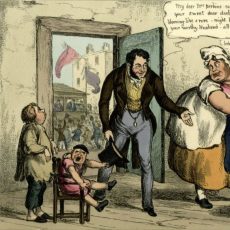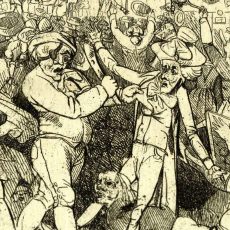Apr
1768
northampton
Contested
GENERAL ELECTION
Poll book data from:
Citation: To the worthy electors… the poll for members… (London, 1768)
Source: John Sims (ed.), A Handlist of British Parliamentary Poll Books (Leicester, 1984); Jeremy Gibson and Colin Rogers (eds.), Poll Books, 1696–1872: A Directory of Holdings in Great Britain (4th edn., Bury, 2008).
Timeline & Key Statistics
Contexts & Remarks
Dates: Thursday 17 Mar.-Friday 1 Apr. 1768.
Poll book reference: A state of the poll... in the interest of the Hon. Thomas Howe (Northampton: Cluer Dicey & Son, [1768]).
A preface to the poll book is supportive of Thomas Howe's resolution to petition the result: 'Those, who look into the State of the Poll, are acquainted with their Neighbours, and well know the genuine from the fictitious Housholder'.
Prior to 1768, the interest of the earl of Halifax and earl of Northampton had securely returned their choice of candidates for the borough. Indeed, the duke of Newcastle wrote that, 'I have always understood that when my Lord Halifax and my Lord Northampton agreed ... their interest was secure' (BL Add. Ms 32,989, f.313) However, for that general election, Lord Spencer waded into Northampton politics, upsetting the balance that had been maintained over the early decades of the century. Thomas Oldfield's history of the 1768 general election viewed it as 'the most violent contest for aristocratic pre-eminence that has taken place for the last century', with canvassing starting even before the dissolution of Parliament.
Candidates: Sir George Brydges Rodney (Tory), Sir George Osborn (Tory), and Thomas Howe (Whig).
Sir George Brydges Rodney of great Alresford came from a Somertsetshire family connected to the duke of Chandos. Upon leaving the navy, Rodney served as MP for Saltash, Okehampton, and Penryn before setting his sights on Northampton, supported by the earl of Northampton.
Sir George Osborn was a young officer in the army who stood as a candidate for Northampton on his uncle, Lord Halifax's, interest at the age of 26.
Thomas Howe was the son of the 2nd Viscount Howe, who was supported by Lord Spencer in the expensive electoral contest.
Prior to the opening of the poll, an agreement was reached on 23 October 1767 in the 'contest of the three earls', revealing that excessive noise, rioting, carousing, and vandalism were rampant and needed to be policed. The election was divisive and damaging to the town.
During the 14 days of polling, all candidates were in close contention. However, the mayor who served as returning officer rejected 167 votes for Howe, betraying his partiality, as the corporation was closely supported by the earl of Halifax. The election returned Rodney and Osborn, although Howe contested the result with a petition. To determine which MP would vacate his seat for Howe, Rodney and Osborn drew lots, with Osborn ultimately yielding to Howe in exchange for a seat at Bossiney. Howe was finally seated in 1769. The 1768 election changed the balance of power in Northampton, as the earl of Halifax was financially ruined by the expense of the contest, withdrawing from Northampton's politics entirely. The earl of Northampton left his seat for Europe, where living expenses were notably lower. From that point, Lord Northampton's agent and Lord Spencer jointly determined Northampton's candidates.
Cultural Artefacts
Poll Book
Below is a digitised version of the poll book for this election:







